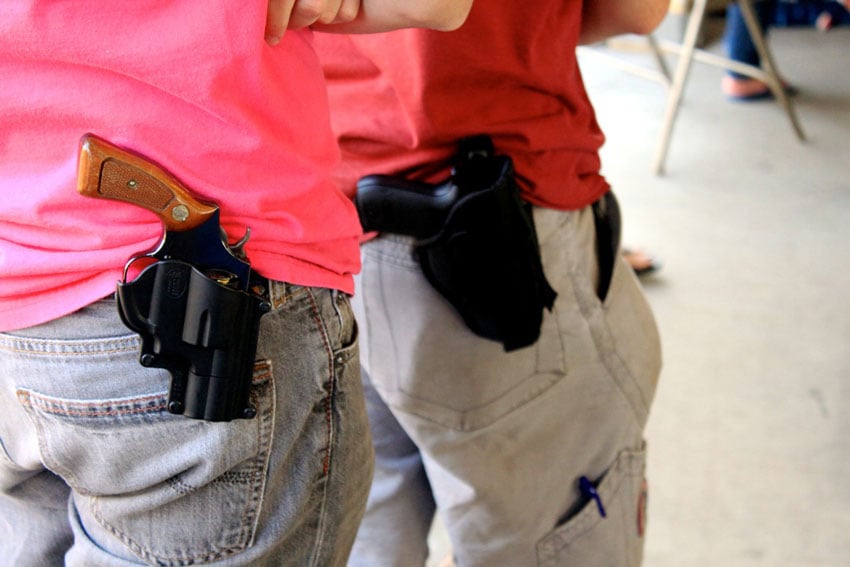
As of January 1st, Texans with a valid Concealed Handgun License may now openly carry their handguns. While it will always be your choice on which method to carry, it’s a great step forward in the furthering of our 2nd Amendment rights.
There are, however, some things to be aware of with the new law. Today we’ll be discussing the basics and some do’s and dont’s related to open carry in Texas.
Concealed Carry
Let’s first examine the current law for carrying a handgun in Texas, before the recent open carry addition. In 1995, Texas passed its first Concealed Carry bill allowing residents to apply for a Concealed Handgun License. Unlike some states, Texas required applicants to take a class and pass a shooting test to obtain a CHL.
Once issued, the CHL was required to be renewed every five years, which included taking an additional class. (The requirement of the class for renewal has since been removed.) With a CHL, the holder could now carry in public and into private establishments as long as the gun was concealed. Businesses that didn’t want concealed carry on their premises had to display a sign known as Section 30.06, which gives specific language in both English and Spanish about a License Holder behind barred from entering their establishment with a concealed handgun.
Signs that don’t have the specific language, or aren’t placed in a conspicuous location don’t hold the weight of law. However, if someone from a private establishment asks a CHL Holder to leave the premises, they must comply or be faced with possible trespassing charges.
An additional restriction on concealed handguns prohibits carrying into an establishment that derives more than 51% of its revenue from the sale of alcohol. Signs in these establishments will display this text along with a large 51% image.
Open Carry
Texas House Bill 910 was first introduced in January of 2015 and was signed into law by Governor Greg Abbott on June 13, 2015. This bill changes the nomenclature to a License to Carry rather than a Concealed Handgun License. It allows license holders to carry a handgun unconcealed in a belt or shoulder holster and doesn’t require additional fees, training or paperwork to those with existing Concealed Handgun Licenses.
Holsters
By the text of the law, the holster used for open carry must be a shoulder or belt holster; specifics are not given and don’t include things like retention or attachment method. It’s likely that any holster that attaches to a belt or the shoulder would fit the criteria, so holsters like drop legs should be allowed as long as they attach to the belt in some manner.
Restrictions
No updates have been made to the restriction on prohibited places for carrying a handgun with the passing of open carry. High School, College and Professional sporting events, courtrooms, polling places and secured areas of airports are still off limits, just like they were before with a concealed license.
Section 30.07
As with Concealed Carry, establishments wishing to ban open carry on their premises must display a specific sign, the newly created 30.07 sign. Both the 30.06 and 30.07 must be displayed together in a conspicuous place in order for an establishment to legally bar those with a license from carrying inside.
Our Take
Many opponents to the new legislation feared blood in the streets when House Bill 910 went into effect on the 1st, but their fears seem unwarranted as many Police Departments report having no issues or calls related to open carry.
Though it’s definitely a great step forward in Texas Resident’s Second Amendment rights, we do caution those who choose to carry openly to use a holster with some sort of retention and/or get some weapon retention training. With a holster without retention, it could be easier for someone to take your firearm from you. Many who take a weapon retention class for the first time are surprised at just how easy it can be.
Personally, we feel like open carry draws a large amount of unwanted attention from those around you. We believe in exercising our rights and that rights which aren’t exercised can be lost, but we also advocate being discreet when out and about; it’s a little difficult to do that while open carrying.
What are your thoughts on the recent changes to the law in Texas? Will you be open carrying your handgun? Let us know in the comments below!